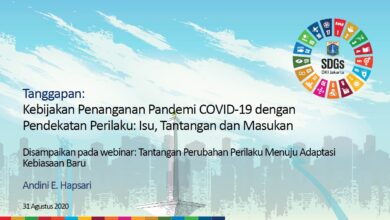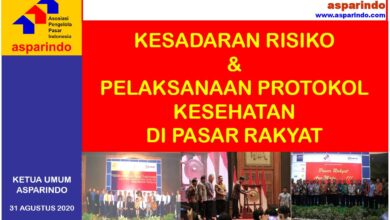
27 Februari, 2019.
Muhammad Ridick would rather endure a back-breaking five hours of commuting on his motorbike each day than ride Jakarta’s notorious public transport.
“It’s very difficult to get a seat on a bus or train during rush hour,” said Ridick, 25, an employee at PT Telekomunikasi Indonesia, whose 80 kilometer (50 mile) round-trip journey to work and back means he often doesn’t reach his home in the town of Bekasi until 10 p.m. “Rain and flooding often force commuter trains to stop at random times and places. It’s frustrating.”
Next month, the city is taking a step to try to address the pollution, frustration, economic loss and hundreds of deaths each year caused by Jakarta’s traffic. The city will open its first Mass Rapid Transit rail line. The project, first mooted in the 1980s, got off the ground in 2013 after President Joko Widodo, then Jakarta governor, secured funding and approval. The first phase, built at a cost of $1.2 billion, will connect 13 stations along 16 kilometers of line from the south of the city to the business district. It is expected to move 170,000 passengers a day for 10,000 rupiah (71 cents) or less per trip. A second phase, connecting the north of the city, is due to open in 2020.
The metro is the showpiece of the president’s $350 billion infrastructure drive and contractors have worked to get it open before he stands for re-election in April. Widodo, known as Jokowi, is pitted against Prabowo Subianto in a rematch of the 2014 presidential contest. The new MRT is a small contribution to a gigantic problem. The urban sprawl around Jakarta houses an estimated 30 million people, encompassing satellite towns such as Bogor, Depok, Tangerang and Bekasi. Drivers waste an average of 184 hours a year stuck in traffic, according to the TomTom congestion index.
Chronic underinvestment in infrastructure and lax building controls mean there are few major road and rail connections. With more than 15,000 people per square kilometer in Jakarta– twice the density of Singapore — there’s little space to build more without rehousing thousands of families. To make matters worse, two-fifths of the city is below sea level and parts of it are sinking at 20 centimeters a year.
Jakarta’s miserable traffic is a result of the city’s overwhelming importance in the nation’s economy. The metropolitan area generates almost a fifth of Indonesia’s annual gross domestic product. Gridlocks and public transport woes cost the city about 100 trillion rupiah ($7.1 billion) a year in economic losses, according to official estimates. They are also lethal. In 2014, a staggering 28,000 people were killed in traffic accidents in Indonesia, according to a 2017 study. In Jakarta alone, 678 people were killed and more than 6,000 injured in traffic related accidents in 2016, official data show.

A Jakarta Mass Rapid Transit (MRT) train travels along an elevated track in Jakarta.
Photographer: Dimas Ardian/Bloomberg
The economic losses are largely the result of a failure to develop the satellite cities as independent centers of economic activity, according to Nirwono Joga, a researcher with the Jakarta-based Urban Study Center.
“If this keeps happening, whatever transportation system is built won’t solve the congestion problems,” Joga said.
The situation is so bad that the government has produced a preliminary study on relocating the capital to the island of Borneo, almost 1,400 kilometers away, to spread economic activity to other parts of Indonesia’s vast chain of 17,000 islands.
Meanwhile, Jakarta authorities have a 600 trillion rupiah plan to sort out the city’s traffic.
It’s a race against time. As authorities build long-overdue roads and rail lines, Jakarta continues to grow. Within 11 years, it will likely overtake Tokyo-Yokohama as the largest conurbation on the planet. There are 10.7 million vehicles on the roads, including 7.97 million motorbikes, and another 430 new cars and 1,440 bikes join them every day.
Until the arrival of the MRT, the government had made little progress. In 2016, the city introduced vehicle restrictions on some of its busiest streets, based on the odd or even vehicle registration numbers on alternate days.

A worker installs railing at the Cipete Raya Mass Rapid Transit (MRT) Station in Jakarta.
Photographer: Dimas Ardian/Bloomberg
A 5.8-kilometer light rail transit service linking north Jakarta to the east is ready for operation and should move about 20,000 people daily. A more ambitious 44.4-kilometer LRT network linking the Greater Jakarta area is under construction and is designed to carry 500,000 passengers a day.

Indonesia is working on a $42 billion plan to integrate Jakarta’s traffic
One key change under Jokowi’s administration is to strengthen the Greater Jakarta Transportation Agency, known as BPTJ, to coordinate all transport infrastructure across more than a dozen municipal and other government agencies, Planning Minister Bambang Brodjonegoro said.
“The services must be integrated in order to facilitate a passenger from the first to last mile,” said Umamil Asri, head of land transportation and roads at the Planning Ministry. “This includes the feeders that will take passengers to a bus terminal or railway as well as those to take them to their workplace.”
The 10-year goal is to boost the use of public transportation to 60 percent from 19 percent now and expand its coverage to at least 80 percent of the total roads. Authorities plan to add more bus terminals and train stations and make it expensive to use private vehicles by hiking parking fees and rolling out an electronic road-pricing system.

Fare gates at the under-construction Bundaran HI Station in Jakarta.
Photographer: Dimas Ardian/Bloomberg
That could halve the city’s average commute time to 1.5 hours, according to Ahmad Yani, the public transportation director at the Transportation Ministry.
Key to success will be the integration of the private firms that have sprung up to take advantage of the shortage of municipal transport. The country’s most-valuable start-up Go-Jek was founded as a ride-hailing bike taxi service to circumvent the city’s notorious traffic. Now authorities bet PT Go-Jek and Grab Taxi Holdings Pte. can feed the new mass transit lines and bus services.
“With the ever-growing use of smartphones, we have to start thinking about making the feeders more proactive,” said Shafruhan Sinungan, head of the Jakarta Organization of Land Transportation Owners. “Small buses or minivans can act as feeders to pick up passengers from nearby settlements.”
Motorbike commuter Ridick isn’t holding his breath. “It’s quite possible that I switch to the public transport in future,” Ridick said. “But a lot will depend on how the government completes various infrastructure projects without disrupting existing road traffic,” he said.
Artikel ini telah dipublikasikan di https://www.bloomberg.com/news/articles/2019-02-26/the-43-billion-race-to-fix-jakarta-s-choking-traffic-starts-now pada 27 Februari, 2019
Oleh: Viriya Singgih dan Arys Aditya, Bloomberg



